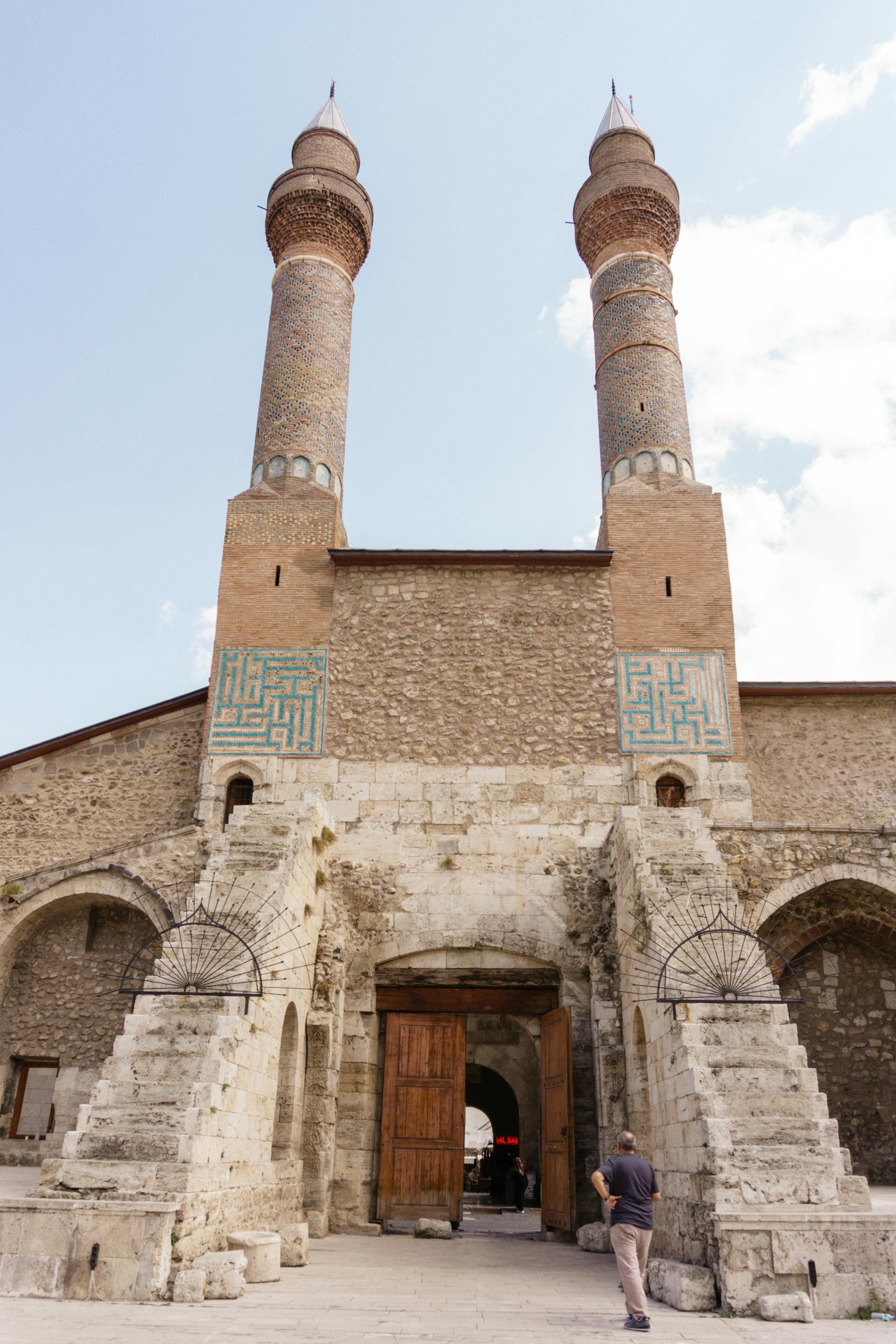Culture & Travel
22 April 2025The Deep Imprint of the Silk Road in Anatolia
For centuries, the Silk Road stood as the most impressive and extensive trade network connecting East and West. It was more than just an exchange of goods—it was a fascinating journey where ideas, cultures, and civilizations intertwined. This massive route, stretching from China to Europe, found a significant passage through Anatolia, a land situated at the heart of the crossroads. Silk, spices, precious stones, and countless other treasures traveled through these lands, reaching diverse cultures.
Anatolia was not just a physical corridor on this ancient route—it was also a vibrant hub of accommodation, production, and cultural interaction. Caravanserais, inns, mosques, and madrasahs built during the Seljuk and Ottoman eras ensured both the safety and livability of the route. Many of these structures still stand today, revealing the enduring legacy of the Silk Road in Anatolia.

Stops Adorned with Historic Architecture
The Anatolian section of the Silk Road hosts remarkable historical textures and structures across various cities. Kayseri, Sivas, Tokat, Amasya, and Erzurum stand out on the eastern part of the route, while Konya, Afyonkarahisar, Denizli, and Antalya are among the key stops in the west. These cities were not only centers of trade but also of science, art, and culture.
The Sultanhanı Caravanserai in Aksaray—Anatolia's largest—still captivates visitors today, while the Taşhan in Tokat stands out as a hub for traditional handicrafts. Koza Han in Bursa, once the beating heart of the silk trade during the Ottoman period, remains one of the few heritage sites preserving its historical significance. These stops offer unique discovery points for travelers eager to experience both the historical atmosphere and the local culture.

The Silk Road as a Cultural Journey
Following the traces of the Silk Road in Anatolia is more than a historical tour—it's a multilayered cultural experience. Today, the cities along this route welcome visitors with their hospitality, traditional lifestyles, and rich gastronomy. Each destination feels like an open-air museum, offering living history from past to present.
For example, in Konya, you can visit the Mevlana Museum and then delve into the tastes of traditional Turkish cuisine. In Sivas, after exploring the Divriği Great Mosque, you can admire locally woven rugs adorned with regional motifs. Every stop tells a story deeply entwined with history. Anatolia is not merely a bridge on this route—it represents a way of life in its own right.

Art and Craft Along the Silk Road
Silk, one of the Silk Road’s most precious commodities, transformed into a cultural richness in Anatolia. Bursa emerged as a prominent city, becoming the capital of silk production and trade starting from the Ottoman period. The journey that began in Koza Han reached all the way to royal palaces, with silk fabrics breathing life into sultans’ robes, bridal dowries, and traditional weaves.
Even today, silk weaving continues in small ateliers around Bursa using traditional methods. This craft is not only a heritage of the past but also a source of inspiration for modern designers. Along this route, travelers can explore not just history, but also art delicately crafted through the elegance of silk.

Things to Know While Planning Your Route
The Silk Road, which once served as a bridge between East and West, now offers an unforgettable journey for history enthusiasts and adventurers alike. From ancient cities to desert passes, inns to caravanserais—here are a few practical tips to help you before setting out:
1. Route Planning: Which Countries, Which Stops?
Although it may not be feasible to travel the entire Silk Road today, you can divide it into regional sections for a rewarding journey. Countries like Türkiye, Iran, Uzbekistan, Turkmenistan, Kazakhstan, China, and even Mongolia still bear the marks of this legendary road. In Türkiye, cities like Istanbul, Bursa, Konya, and Erzurum are essential stops, while in Central Asia, Samarkand, Bukhara, and Tashkent are must-sees.
Tip: Opt for countries with visa-free or easy visa policies to save time and money. Give priority to UNESCO World Heritage Sites located along the Silk Road.

2. Best Time to Go
Since the Silk Road passes through various climate zones, choosing the right season is crucial. Central Asia’s desert and semi-arid regions can be extremely hot in summer and very cold in winter. The ideal time to travel is spring (April-May) and autumn (September-October), when the weather is milder and nature is more welcoming.
3. Transportation Options: By Train, Bus, or Rental Car
When planning intercity travel along the route, trains are often the most convenient option—especially in China and Central Asia where the railway networks are well-developed. Buses, minibuses, and local taxis are also widely used. Adventurous travelers might prefer renting a car to explore the route at their own pace.
4. Accommodation: From Inns to Boutique Hotels
You can find authentic accommodation options along the Silk Road, such as restored caravanserais or traditional inns, particularly in historic city centers. In major cities, a wide range of options is available, including boutique hotels, hostels, and international chains.
5. Cultural Awareness and Safety
Many countries along the Silk Road preserve their traditional lifestyles, especially in rural areas. Respectful attire and behavior are essential. Always ask permission before taking photos and dress appropriately when visiting religious sites.


